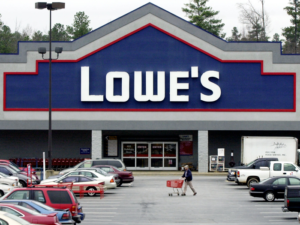
What is demand generation? Demand generation is a marketing technique that helps businesses find new customers. It’s also known as lead generation, inbound marketing, and outbound marketing.
Demand generation is a term that might not be familiar to you. Some people hear the word and think of demand as being “demanding.” This couldn’t be any farther from the truth! Demand generation is an important part of your marketing strategy because it helps generate new leads for your business. You can use these leads to grow revenue and create new customers for your company. This article will discuss what demand gen means, why it’s so important, and how you can implement different strategies to help improve your b2b lead generation efforts.
Jump Ahead To :
What Really Is Demand Generation?

Demand generation is a process of identifying, prioritizing and engaging with prospective buyers. In demand generation campaigns, marketers create demand for their product or service by targeting the right audience at the right time with the right message to move them from awareness through purchase.
Marketers use demand gen to target specific individuals within their ideal customer profiles (ICPs) using demographic data like location, age, gender or interests, and psychographic variables such as attitudes, values, and lifestyles. By targeting ICPs based on various criteria, it is possible to find precisely those prospects most likely to be interested in purchasing your product/service.
Demand Generation Tactics: – Social media marketing campaigns provide marketers with another great way of engaging with people who are likely to be interested in their product/service.
Demand generation has a lot of different tactics that you can use, including social media marketing campaigns and email marketing campaigns.
Staying on top of demand gen is essential for the success of any bpm campaign. Marketers must understand how demand generation impacts sales pipeline contribution rates & revenue goals and which demand gen activities work best with various business goals to maximize lead management results. Demand Gen Activities: – Creating great content takes time, but it’s worth every minute when you see your leads coming through! Blogging about industry news or adding fresh insights into topics related to your products & services will help engage customers at all stages of the buying cycle.
Four Key Pillars Of Demand Generation

Lead Generation
The demand generation model is a process in which demand for a product or service and the company itself reach its goals. It’s one of several processes that help build an effective demand strategy and lead to successful sales numbers.
A good demand generator should always be aware of what’s going on around them to better predict their customers’ needs based on changes within the market environment. The need for this behaviour becomes especially important when thinking about lead generation as a pillar demand. It allows you to take advantage of opportunities before others do so by providing your clients with just what they want at just the right time. In other words: if done correctly, it will allow you not only to reach but exceed all expectations!
Businesses must prioritize lead-gen efforts with the goal being getting more qualified leads into their pipeline, thus increasing opportunities for downsell/upsell scenarios, further fueling revenue growth!
Demand Capture
When it comes to demand generation, people often focus on customer acquisition or generating awareness. This is because those two are typically the most measurable and scalable activities that you can do. However, another part of demand-driven businesses called demand capture serves as an alternative approach for measuring success in business development efforts without requiring too much upfront investment. It’s not something new, but very few companies implement this strategy.
Demand capture is one of the pillars that support demand generation. It’s about taking control over your brand, product or service and making it stand out from competitors. At first glance, this might look like something you can do with social media, but there are many other ways to “capture” demand (pun intended).
- Define what success means for you.
- Have different approaches to consider when building a strategy around capturing demand, including SEO, content marketing, email marketing etc.
Demand capture is typically associated with BtoB businesses. Still, there’s no reason why this can’t also apply to other industries, too, so long as the goal remains finding out who would be interested in buying or using your products or services.
Pipeline Acceleration
Demand generation is the cornerstone to any successful marketing initiative. Four pillars make up demand. Pipeline acceleration is one pillar, but it doesn’t work alone. It’s necessary to ramp lead volume into your funnel and build momentum towards a sale or campaign activation goal.
With this in mind, let’s look at how you can accelerate pipeline through demand gen activities like content strategy & nurturing programs, events/campaign launches, social media engagement, guest blogging outreach campaigns and more! Here are some ways each activity can help amp up your demand flow:
Content Strategy – Provides resources to educate prospects on relevant topics to feel confident moving forward with their purchase.
Social Media Engagement – Delivers educational content to prospects, but in a modern way, that’s highly relevant.
Events/Campaign Launches – Helps the demand gen team scale demand generation efforts by creating opportunities to engage with large groups of targeted buyers.
Guest Blogging Outreach Campaigns – Builds awareness for your brand through industry thought leaders who can deliver qualified leads to demand generation.
In addition, pipeline acceleration can help gain more demand in your pipeline and speed up sales processes by generating qualified leads, which are better suited for conversion than cold prospects. Although there are many demands generation techniques available today, pipelines need not be empty if you leverage one or two key mechanisms at a time.
Pipeline acceleration as a pillar of demand should start with an analysis of what types of activities will generate revenue faster so you can prioritize them accordingly within your company’s overall demand strategy. Often it takes months, even years before new products reach full-scale adoption because companies rely solely on organic growth via word-of-mouth referrals from existing customers instead of proactively identifying and engaging with potential buyers.
It’s important to consistently engage and explore demand generation opportunities to maintain pipeline velocity while also building demand. Still, the most effective demand marketing campaigns will adapt based on changing market dynamics and buyer behaviours.
Sales Enablement
Sales enablement is an important part of demand generation. It helps sales teams understand the customers they are selling to, what’s in it for them and how to engage with prospects at every stage in the decision process. Knowing this will make demand gen more effective – because when reps know where a prospect is in their buying journey, they can provide relevant content which enables them to close business faster.”
Fundamentals Of Demand Generation

The demand generation process requires a combination of detailed planning and consistent effort. The demand gen fundamentals include:
- Having an agile strategy that can adapt to changing market conditions, customers’ needs and buyer’s expectations;
- Creating demand through demand segmentation strategies ensures prospects get the right message from the right channel at the right time.
- Data management – if you don’t know who your buyers are or what they want, how will you create value? You must have a rich customer understanding to
- communicate effectively with them using relevant channels. Data is also needed to build personalized content, so there isn’t any need to build scalable processes around it!
- Demand creation activities such as demand forecasting, digital demand generation, demand acceleration and demand creation are all important.
- Demand management is not just about making sure you have the right people in place to do these activities but also creating processes that enable them to work together seamlessly. Hence, they scale across your organization without adding costs or complexity.
- Partnerships with third parties can provide further insight into new channels for demand gen and reduce the time taken to deliver campaigns by leveraging their expertise in social media marketing. These partners can be suppliers of SaaS solutions who offer demand gen tools or agencies whose experience spans a range of different disciplines, which will help improve coverage of leads from both new and existing markets.
Demand Generation Vs Lead Generation
Demand generation and lead generation are two concepts that many marketers grapple with. However, demand gen is much more than just generating leads. It’s about creating demand for your company at every stage of the buying process – from awareness to purchase.
Demand generation is the process of initiating demand for a product or service. On the other hand, lead generation provides companies with sales-ready leads that are ready to be passed to sales teams once marketing teams have qualified them.
The processes involved in demand generation and lead generation are sometimes misunderstood as being similar, but differences can affect how successful your campaigns will be.
Lastly, Lead generation and demand generation are different yet similar processes. Both demand generation and lead generation aim to bring in new business from prospects that have not already been identified as potential customers of a company or service. Many people believe that the value of demand gen is better than that of lead gen, but this may depend on your definition.
Nine Demand Generation Strategies For New Brands

- Connect with influencers who can endorse or talk about your product/service – this is one of the most effective demand generation tactics because these people already influence potential buyers. Plus, it’s quick and easy to implement since all you need is access to their email address to send them a personalized pitch.
- Update your demand generation efforts regularly to keep up with current events and changes in the marketplace, so you can capitalize on opportunities as they arise. This is particularly important if you’re selling something that people need right now; demand for it could dry up quickly! A good rule of thumb is to update things once per month or every quarter depending on how fast demand fluctuates where you operate (e.g., consumer technology).
- Build an audience on social platforms like Facebook, Twitter, Instagram, etc. With over two billion active users worldwide, there are plenty of potential customers out there waiting to hear about your product/service – all you have to do is up first! Just make sure that you’re not solely focused on demand generation tactics here – it’s important to have a strategy around engagement so that people are paying attention when your messages show up.
- Make sure demand campaigns can be easily shared across platforms, including email and social media sites like Twitter or Facebook. If the demanding campaign doesn’t play nice with other networks, then there’s no way for potential customers to share their enthusiasm about what you’re offering! Plus, this builds brand awareness which will help drive more demand in the future as your audience spreads word of mouth referrals about your product/service.
- Engage buyers directly via messaging apps where they spend most of their time (e.g., WhatsApp). This is an extremely effective tactic because these platforms are generally their go-to places for engaging with friends and family. And if you can get in front of them directly, there’s a good chance demand will increase because people like to follow the advice of others they care about (and may even trust more than brands).
- Build demand using video content on Facebook or YouTube. These sites have billions of users that come back every day, so it makes sense to optimize your demand generation efforts here! But make sure you’re doing things right by optimizing this content for SEO purposes (so potential customers can find it when searching Google) as well as creating compelling titles/thumbnails/descriptions.
- Use retargeting strategies on social media platforms like Twitter or Facebook to help drive demand. This is one of the most effective demand generation tactics because social media platforms have billions of users who come back every day! Plus, these platforms make it easy to segment your audience and retarget those who already know about you (by visiting your website or engaging with demand campaigns) but haven’t yet clicked on a CTA button.
- Create demand campaigns using video content on Facebook – this site has over two billion active daily users, so there’s no better place to optimize demand via video than here! Just remember that if people don’t click play, then they’ll never get exposed to what makes you different from other brands out there. So be sure to include an eye-catching thumbnail and compelling in the description section for maximum impact.
In Conclusion
In demand generation campaigns, marketers create demand by targeting the right audience with the right message to move them from awareness through purchase. If you’re looking for a marketing partner to help your business grow and thrive in today’s digital world, we would love to hear from you!






